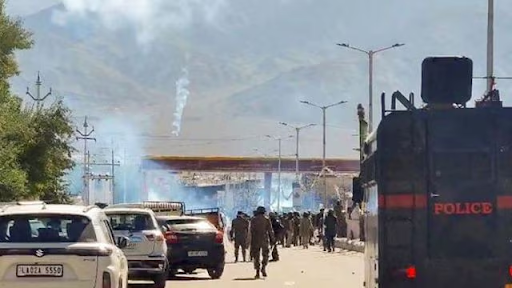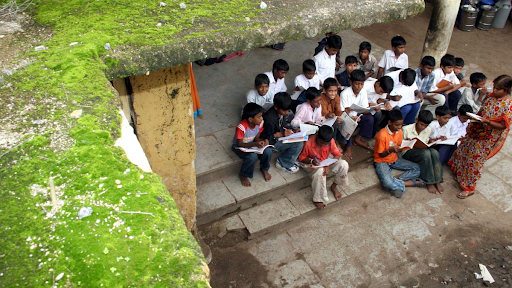Description

Copyright infringement not intended
Picture Courtesy: https://indianexpress.com/article/cities/delhi/ews-students-admission-delhi-hc-directs-merger-9529043/
Context: The Delhi High Court orders the merger of school identification numbers (IDs) to ensure seamless education for Economically Weaker Sections (EWS) and Disadvantaged Groups (DG) under the Right to Education (RTE) Act.
Details
- The Right to Education (RTE) Act, enacted in 2009, mandates free and compulsory education for children between the ages of 6 and 14.
- It reserves 25% of seats in private unaided schools for children from EWS/DG categories, ensuring they have access to quality education.
-
- Economically Weaker Sections (EWS): Refers to families with an annual income below a certain threshold set by the government.
- Disadvantaged Groups (DG): Includes children from Scheduled Castes (SC), Scheduled Tribes (ST), Other Backward Classes (OBC), and others as defined by the RTE Act.
- These provisions are designed to provide equal opportunities for all children, regardless of their economic or social background.
Background of the Recent Case
- The recent Delhi High Court ruling comes in response to a series of petitions filed by parents of children admitted to the junior wing of Holy Innocents Public School in Delhi under the EWS/DG category.
-
- Despite being promoted to the senior wing (class 1), these students were denied admission due to the separate identification numbers (IDs) assigned to the junior and senior wings by the Department of Education (DoE).
- The court noted that this issue is not unique to one school but is a problem faced by many EWS/DG students across Delhi.
Delhi High Court verdict
- Merger of IDs: The High Court ordered that the different IDs assigned to the junior and senior wings of the same school be merged into a single ID.
- Appointment of Nodal Officers: Every private unaided recognized school in Delhi must appoint a dedicated nodal officer to oversee the admission process for students under the EWS/DG category.
- Compliance Timeline: The court directed the Department of Education (DoE) to complete the ID merger process within eight weeks of the judgment.
- Focus on Dignity and Fairness: The court emphasized the importance of a seamless transition from one class to another, ensuring that the dignity of the children and their parents is not compromised.
About Right to Education Act (RTE)
- The Right to Education was made a fundamental right by the 86th Constitutional Amendment Act 2002.
-
- 86th Constitutional Amendment Act 2002 added Article 21 A which declares that the state shall provide free and compulsory education to all children of age six to fourteen years
Key Features of the RTE Act
|
Free and Compulsory Education
|
●The RTE Act guarantees free education, meaning that no child should have to pay any fee or charges that might prevent them from accessing and completing elementary education.
●Compulsory education means the government is responsible for ensuring that every child attends school and completes their elementary education.
|
|
Age-Appropriate Admission
|
●The Act allows children who have never been to school or dropped out to be admitted to a class appropriate to their age.
|
|
Norms and Standards
|
●The RTE Act sets minimum norms and standards for schools, including the required pupil-teacher ratios (PTRs), infrastructure requirements, and teacher qualifications.
|
|
Prohibition of Certain Practices
|
●The Act prohibits physical punishment, mental harassment, capitation fees, and screening procedures for admission.
|
|
Curriculum Development
|
●The Act emphasizes developing a curriculum that aligns with constitutional values, promoting holistic child development.
● The curriculum should be child-friendly and stress-free, encouraging learning rather than rote memorization.
|
Impact of the RTE Act on Indian Education
- Increased Enrollment Rates: According to the 2023 Annual Status of Education Report (ASER), 98.4% of children in the 6–14 age groups were enrolled in schools in 2022.
- Improved Infrastructure: The RTE Act has led to improved infrastructure in many government schools. For example, the school infrastructure in Bihar has seen improvement, with better classrooms, toilets, and drinking water facilities being provided to students.
Challenges in Implementation
- Quality of Education: According to ASER 2023, about 25% of youth in the age group 14-18 years cannot read a Std II level text fluently in their regional language.
-
- As per the Report, about 42% of children in the age group of 14 to 18 years in rural India cannot read easy sentences in English.
- More than 50% of the surveyed youths struggle with basic arithmetic, such as solving simple division problems.
- Infrastructure Gaps: While there have been improvements, many schools still lack basic infrastructure. Such gaps hinder the learning environment, particularly for female students.
- Teacher Shortages and Deployment: There is still a shortage of trained teachers in rural areas, often suffering from uneven teacher deployment.
- Implementation Gap: The effectiveness of the RTE Act’s implementation varies across states. Some states have fully embraced the provisions of the Act, while others lag due to political, economic, or administrative reasons.
Way Forward
- Strengthening Teacher Training: There is a need for continuous professional development programs for teachers to ensure they are equipped to handle diverse classroom situations and provide quality education.
- Community Engagement: Active involvement of the local community and parents can significantly enhance the accountability and effectiveness of schools.
- Focus on Learning Outcomes: Instead of merely focusing on enrollment, there should be a greater emphasis on the quality of learning outcomes. Regular assessments and remedial teaching can help improve learning levels.
- Bridging Infrastructure Gaps: States must prioritize bridging infrastructure gaps, particularly in rural and underdeveloped areas. Adequate funds should be allocated to ensure that all schools meet the RTE norms.
Source:
Indian Express
Department of School Education
Indian Express
|
PRACTICE QUESTION
Q. Consider the following statement in the context of the Annual Status of Education Report (ASER) 2023:
1. It is conducted by the Ministry of Education.
2. The report highlights that 42% of youths aged 14-18 in rural India cannot read simple sentences in English.
3. More than 50% of the surveyed youths struggle with basic arithmetic, such as solving simple division problems.
How many of the above statements are correct?
A) Only one
B) Only two
C) All three
D) None
Answer: B
Explanation:
Statement 1 is incorrect: The Annual Status of Education Report (ASER) is not conducted by the Ministry of Education. It is conducted by the Pratham Education Foundation, which is an NGO.
Statement 2 is correct: According to the ASER 2023 report, 42% of youths in the 14-18 age group in rural India are unable to read simple sentences in English. This highlights a significant gap in literacy skills among older students in rural areas.
Statement 3 is correct: The ASER 2023 report indicates that more than 50% of the surveyed youths struggle with basic arithmetic problems, including simple division.
|











